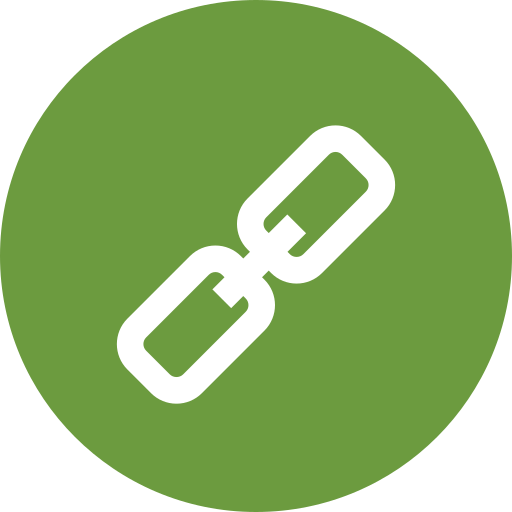| Product name | Per Pill | Savings | Per Pack | Order |
|---|---|---|---|---|
| 30 pills | $1.37 | $41.04 | ADD TO CART | |
| 60 pills | $1.11 | $15.67 | $82.08 $66.41 | ADD TO CART |
| 90 pills | $1.02 | $31.34 | $123.12 $91.78 | ADD TO CART |
| 120 pills | $0.98 | $47.01 | $164.16 $117.15 | ADD TO CART |
| 180 pills | $0.93 | $78.35 | $246.24 $167.89 | ADD TO CART |
| 270 pills | $0.90 | $125.36 | $369.36 $244.00 | ADD TO CART |
| 360 pills | $0.89 | $172.37 | $492.48 $320.11 | ADD TO CART |
| Product name | Per Pill | Savings | Per Pack | Order |
|---|---|---|---|---|
| 30 pills | $0.99 | $29.63 | ADD TO CART | |
| 60 pills | $0.80 | $11.31 | $59.26 $47.95 | ADD TO CART |
| 90 pills | $0.74 | $22.63 | $88.90 $66.27 | ADD TO CART |
| 120 pills | $0.70 | $33.94 | $118.52 $84.58 | ADD TO CART |
| 180 pills | $0.67 | $56.57 | $177.79 $121.22 | ADD TO CART |
| 270 pills | $0.65 | $90.51 | $266.68 $176.17 | ADD TO CART |
| 360 pills | $0.64 | $124.45 | $355.57 $231.12 | ADD TO CART |
Muscle spasms and stiffness can be debilitating, affecting daily activities and overall quality of life. Zanaflex, a muscle relaxant, is often prescribed to alleviate these symptoms. In this article, we will delve into the world of Zanaflex, exploring its uses, benefits, and availability. We will also discuss how to order Zanaflex, buy Zanaflex, and purchase generic Zanaflex 2 mg on line.
What is Zanaflex?
Zanaflex, also known as tizanidine, is a muscle relaxant used to treat muscle spasms caused by conditions such as multiple sclerosis, spinal cord injury, or stroke. It works by blocking nerve impulses that cause muscle spasms, allowing for more relaxed and flexible movement.
Benefits of Zanaflex
The benefits of Zanaflex are numerous:
- Relieves muscle spasms and stiffness
- Improves mobility and flexibility
- Reduces pain and discomfort
- Enhances overall quality of life
Zanaflex 4 mg and 2 mg: What's the Difference?
Zanaflex is available in two strengths: 4 mg and 2 mg. The 4 mg tablet is typically prescribed for more severe muscle spasms, while the 2 mg tablet is used for mild to moderate spasms. It's essential to consult with a doctor to determine the best dosage for your specific condition.
How to Order Zanaflex
If you're looking to order Zanaflex, there are several options available:
- Order genuine Zanaflex from a reputable online pharmacy
- Buy Zanaflex no prescription from a licensed pharmacy
- Purchase Zanaflex overnight for urgent needs
- Order 2 mg Zanaflex with Amex or other accepted payment methods
Table: Zanaflex Dosage and Availability
| Dosage | Availability | Payment Options |
|---|---|---|
| 4 mg | Cheap Zanaflex 4 mg with Visa, Generic 4 mg Zanaflex Visa | Amex, Visa, Mastercard |
| 2 mg | Buy cheap Zanaflex 2 mg on line, Generic Zanaflex 2 mg on-line | Amex, Visa, Mastercard |
Lists of Zanaflex Benefits and Uses
Here are some benefits and uses of Zanaflex:
- Relieves muscle spasms and stiffness
- Improves mobility and flexibility
- Reduces pain and discomfort
- Enhances overall quality of life
- Used to treat muscle spasms caused by:
- Multiple sclerosis
- Spinal cord injury
- Stroke
- Other conditions
How to Buy Zanaflex
If you're looking to buy Zanaflex, consider the following options:
- Buy Zanaflex 4 mg line from a reputable online pharmacy
- Purchase discount Zanaflex on-line for cost-effective options
- Order Zanaflex from India or other international pharmacies
- Buy Zanaflex 2 mg low cost for affordable prices
Discounts and Promotions
Many online pharmacies offer discounts and promotions for Zanaflex. Look for:
- Discount Zanaflex 4 mg with Mastercard
- Cheap Zanaflex 2 mg line
- Buy Zanaflex 4 mg free shipping for convenient delivery
- Purchase Zanaflex mastercard for secure payment options
Conclusion
Zanaflex 4 mg and 2 mg are effective muscle relaxants used to treat muscle spasms and stiffness. With various options available to order Zanaflex, buy Zanaflex, and purchase generic Zanaflex 2 mg on line, it's essential to consult with a doctor to determine the best dosage and treatment plan for your specific condition. Remember to always prioritize your health and well-being by choosing reputable online pharmacies and following proper dosage instructions.
Spasticity is a condition characterized by abnormal muscle tightness, stiffness, and spasms, which can be caused by a variety of factors, including neurological disorders, injuries, and diseases. It can significantly impact an individual's quality of life, making everyday activities a challenge. Muscle relaxers are a common treatment option for spasticity, and in this article, we will delve into the world of muscle relaxers, exploring their types, uses, benefits, and potential side effects.
What is Spasticity?
Spasticity is a movement disorder that affects the muscles, causing them to become stiff, tight, and prone to spasms. It can be caused by a range of factors, including:
- Neurological disorders, such as cerebral palsy, multiple sclerosis, and stroke
- Injuries, such as spinal cord injuries and traumatic brain injuries
- Diseases, such as amyotrophic lateral sclerosis (ALS) and Parkinson's disease
- Infections, such as meningitis and encephalitis
Spasticity can manifest in different ways, including:
- Increased muscle tone, leading to stiffness and rigidity
- Muscle spasms, which can be painful and disrupt daily activities
- Clonus, a condition characterized by rapid, rhythmic muscle contractions
- Contractures, which can lead to permanent muscle shortening and deformity
Types of Muscle Relaxers
Muscle relaxers are a class of medications that work by reducing muscle tone, relieving spasms, and improving mobility. There are several types of muscle relaxers, including:
| Muscle Relaxer | Mechanism of Action | Common Uses |
|---|---|---|
| Baclofen | Acts on the central nervous system to reduce muscle tone | Spasticity, multiple sclerosis, spinal cord injuries |
| Tizanidine | Blocks the action of excitatory neurotransmitters, reducing muscle tone | Spasticity, multiple sclerosis, spinal cord injuries |
| Cyclobenzaprine | Relaxes muscles by blocking the action of acetylcholine | Muscle spasms, fibromyalgia, back pain |
| Diazepam | Enhances the effect of the neurotransmitter GABA, reducing muscle tone | Anxiety, muscle spasms, seizures |
| Dantrolene | Inhibits the release of calcium ions, reducing muscle contraction | Spasticity, malignant hyperthermia, neuroleptic malignant syndrome |
Benefits of Muscle Relaxers
Muscle relaxers can provide significant benefits for individuals with spasticity, including:
- Reduced muscle tone and spasms
- Improved mobility and range of motion
- Enhanced quality of life
- Reduced pain and discomfort
- Improved sleep quality
Some of the benefits of muscle relaxers can be summarized as follows:
- Improved mobility: Muscle relaxers can help reduce muscle stiffness and spasms, making it easier to move and perform daily activities.
- Pain relief: Muscle relaxers can help reduce pain and discomfort associated with spasticity.
- Enhanced quality of life: By reducing muscle tone and spasms, muscle relaxers can improve overall quality of life, enabling individuals to participate in activities they enjoy.
- Improved sleep: Muscle relaxers can help reduce muscle spasms and stiffness, promoting better sleep quality.
Potential Side Effects of Muscle Relaxers
While muscle relaxers can be effective in treating spasticity, they can also have potential side effects, including:
- Drowsiness and fatigue
- Dizziness and lightheadedness
- Nausea and vomiting
- Headaches and muscle weakness
- Dependence and withdrawal symptoms
Some of the potential side effects of muscle relaxers can be summarized as follows:
- Drowsiness and fatigue: Muscle relaxers can cause drowsiness and fatigue, which can impact daily activities and overall quality of life.
- Dizziness and lightheadedness: Muscle relaxers can cause dizziness and lightheadedness, increasing the risk of falls and injuries.
- Nausea and vomiting: Muscle relaxers can cause nausea and vomiting, which can lead to dehydration and electrolyte imbalances.
- Headaches and muscle weakness: Muscle relaxers can cause headaches and muscle weakness, which can impact daily activities and overall quality of life.
- Dependence and withdrawal symptoms: Muscle relaxers can be habit-forming, and stopping their use abruptly can lead to withdrawal symptoms, such as seizures and hallucinations.
List of Precautions to Take When Using Muscle Relaxers
When using muscle relaxers, it is essential to take the following precautions:
- Follow the prescribed dosage: Take the medication exactly as prescribed by your doctor, and do not exceed the recommended dose.
- Monitor your blood pressure: Muscle relaxers can cause changes in blood pressure, so it is essential to monitor your blood pressure regularly.
- Avoid driving and operating heavy machinery: Muscle relaxers can cause drowsiness and dizziness, so it is essential to avoid driving and operating heavy machinery while taking the medication.
- Avoid drinking alcohol: Alcohol can enhance the sedative effects of muscle relaxers, increasing the risk of accidents and injuries.
- Inform your doctor about other medications: Inform your doctor about any other medications you are taking, as muscle relaxers can interact with other medications and cause adverse effects.
Conclusion
Muscle relaxers are a common treatment option for spasticity, and they can provide significant benefits, including reduced muscle tone and spasms, improved mobility, and enhanced quality of life. However, they can also have potential side effects, including drowsiness, dizziness, and dependence. By understanding the different types of muscle relaxers, their benefits, and potential side effects, individuals with spasticity can make informed decisions about their treatment options. It is essential to work closely with your doctor to find the right muscle relaxer and dosage to manage your spasticity and improve your overall quality of life.
























